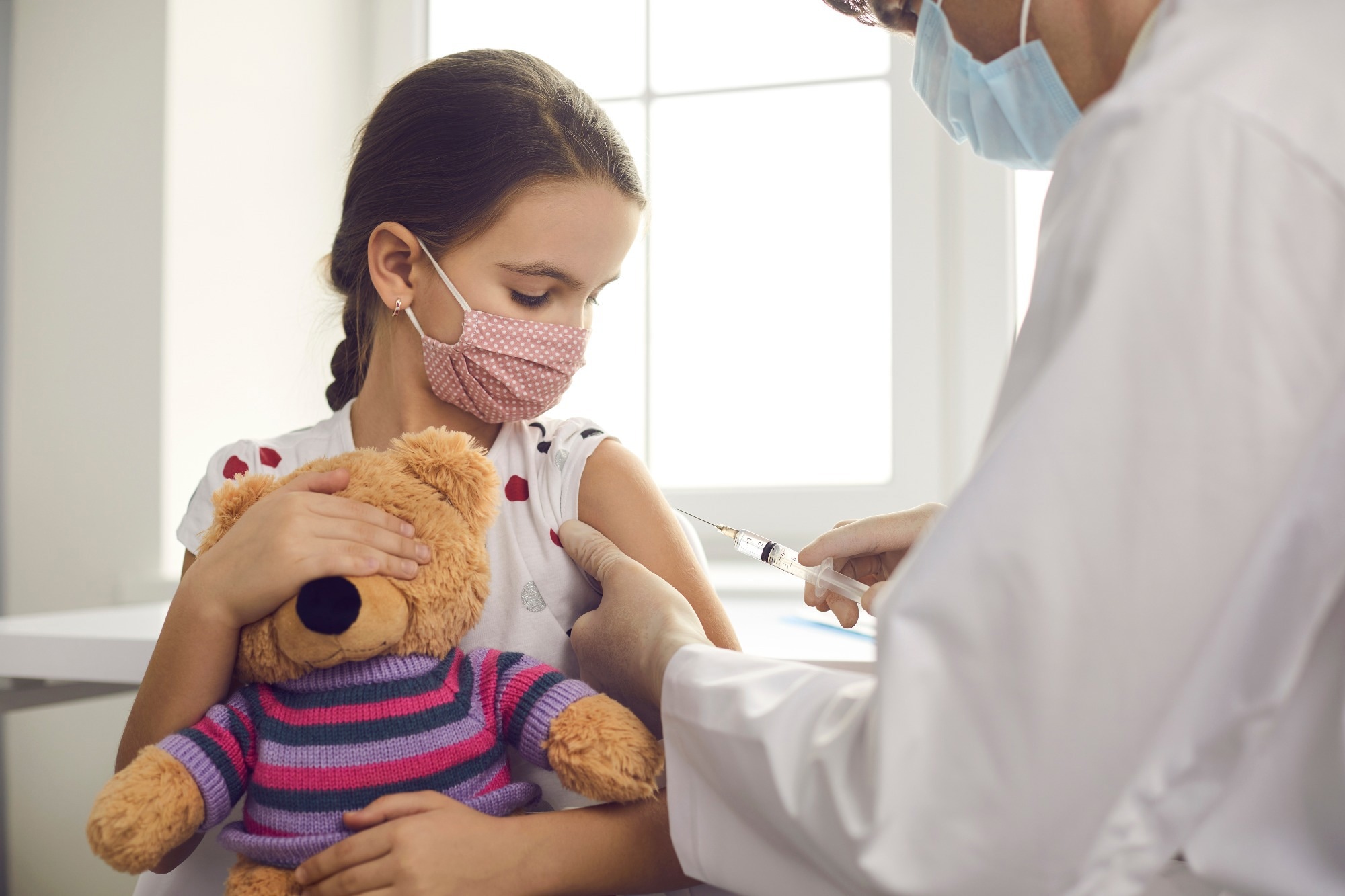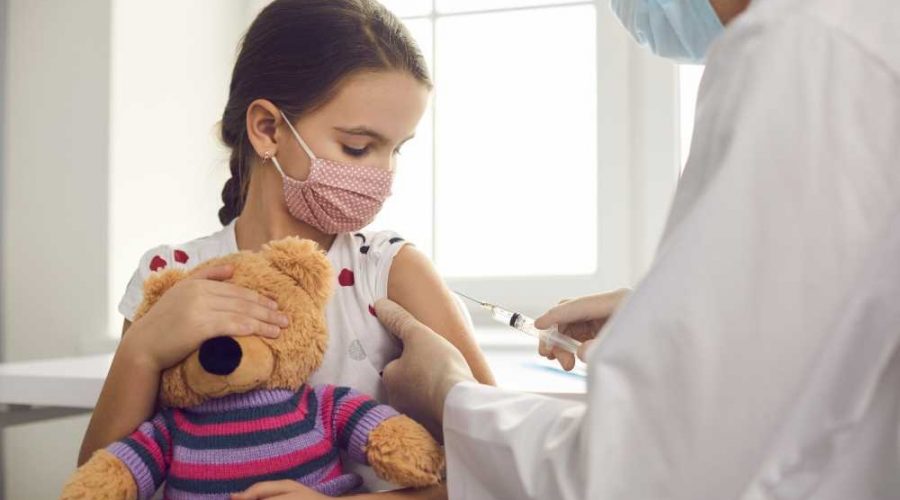High efficacy of SARS-CoV-2 vaccines in preventing COVID-19 deaths in children and adolescents
A recent study published in the BMJ evaluated the effectiveness of coronavirus disease 2019 (COVID-19) vaccines in Argentinian children when severe acute respiratory syndrome coronavirus 2 (SARS-CoV-2) Delta and Omicron variants were predominant.

Background
Antibodies eBook

Argentina implemented the COVID-19 vaccination program prioritizing specific subsets of the population according to the risk of exposure, severe disease, and social vulnerability. Vaccination was initiated for adolescents aged 12 to 17 with Moderna’s mRNA-1273 and Pfizer’s BNT162b2 vaccines in August 2021 and for children aged 3 to 11 with Sinopharm’s BBIBP-CorV vaccine in October 2021.
Although reports suggested that low-and-middle-income countries might have a higher proportion of COVID-19 fatalities in pediatric populations than high-income countries, there is limited evidence on vaccine effectiveness, particularly against death, in children and adolescents. While studies report that the efficacy of the BNT162b2 vaccine in children/adolescents wanes over time, data on changes in the effectiveness of inactivated SARS-CoV-2 vaccines remain scarce.
About the study
In the present study, researchers assessed the effectiveness of BNT162b2, mRNA-1273, and BBIBP-CorV vaccines against SARS-CoV-2 infection and associated mortality in children and adolescents in Argentina during Delta and Omicron waves. All individuals tested for SARS-CoV-2 between September 12, 2021, and April 23, 2022, without a previous positive result were included.
Individuals testing positive for SARS-CoV-2 for the first time were included as cases, whereas controls were those testing negative during the study period. Epidemiologic data were used from the National Surveillance System. Suspected COVID-19 cases and their confirmations were notified by certified public healthcare members.
Vaccination information was accessed from the Nominalized Federal Vaccination Registry. Children (3 – 11 years) were deemed fully vaccinated with the BBIBP-CorV vaccine if they received the second dose at least 14 days before SARS-CoV-2 testing. Adolescents were considered fully vaccinated if they received a two-dose homologous/heterologous regimen of the BNT162b2 or mRNA-1273 vaccine, with a minimum of 14 days interval between testing and the second vaccination.
The primary and secondary outcomes were SARS-CoV-2 infection, confirmed by reverse-transcription polymerase chain reaction (RT-PCR) or antigen testing, and COVID-19-associated death. Cases and controls were exact-matched on age, sex, week/type of testing, residential province, and comorbidities. Conditional logistic regression was applied to compare the odds of SARS-CoV-2 infection. Vaccine effectiveness and the corresponding 95% confidence intervals were computed.
Findings
In total, 844,460 individuals were tested for SARS-CoV-2 during the specified period. Cases had higher proportions of comorbidities, were less likely male, and marginally older than controls. Exact-matching yielded 139,321 cases for analysis. Around 54% of individuals in the matched cohort were fully vaccinated, with 73,409 cases and 77,557 controls.
Most vaccinated adolescents (95%) completed a homologous two-dose regimen, and some (5%) received heterologous vaccination. The median interval between the second vaccination and COVID-19 testing was 66 days for adolescents and 54 days for children. Vaccine effectiveness against infection remained high at 64.2% across age groups during the Delta predominant period but declined during the Omicron wave (19.9%).
However, mRNA vaccines were slightly more effective (26%) during the Omicron period than the BBIBP-CorV vaccine (15.9%). Effectiveness declined with time since vaccination during the Delta wave from 68.4% within 30 days to 65.2% for >61 days in children and from 74.8% to 56.3% in adolescents.
Notably, the decay in effectiveness was much steeper during the Omicron period, declining from 37.6% to 2% in children and from 55.8% to 12.4% in adolescents. During the Delta wave, the effectiveness was 70% for mRNA-1273 and 64% for BNT162b2. It was 89% for those receiving the BNT162b2 as the first dose and mRNA-1273 for the second vaccination and 66% for subjects serially receiving mRNA-1273 and BNT162b2.
However, the estimates were much lower in the Omicron period, with 18% for mRNA-1273 and 28% for BNT162b2. Heterologous vaccination was 40% effective for individuals receiving BNT162b2 first and 31% for those vaccinated with mRNA-1273 first. Fifty-one deaths occurred among cases during the study period.
Of these, 30 were non-vaccinated, eight were partially vaccinated, and nine were fully vaccinated. Overall, effectiveness against mortality was 89% and remained high even during the Omicron wave at 88%. During the Omicron wave, vaccination was 97% and 67% effective against COVID-19-associated mortality in adolescents and children, respectively.
Conclusions
In summary, the researchers observed a high efficacy of SARS-CoV-2 vaccines in preventing deaths due to COVID-19 in the 3–17-year age group, regardless of the predominant circulating variant, albeit the inactivated vaccine was less effective than mRNA vaccines. Vaccines were also effective against SARS-CoV-2 infection initially post-vaccination, but the efficacy declined with time, with a more pronounced decay during the Omicron wave.
- Castelli JM, Rearte A, Olszevicki S, et al. (2022). Effectiveness of mRNA-1273, BNT162b2, and BBIBP-CorV vaccines against infection and mortality in children in Argentina, during predominance of delta and omicron covid-19 variants: test negative, case-control study. BMJ. doi: 10.1136/bmj-2022-073070 https://www.bmj.com/content/379/bmj-2022-073070
Posted in: Child Health News | Medical Science News | Disease/Infection News
Tags: Adolescents, Antigen, Children, Coronavirus, Coronavirus Disease COVID-19, covid-19, Efficacy, Healthcare, Homologous, Mortality, Omicron, Polymerase, Polymerase Chain Reaction, Respiratory, SARS, SARS-CoV-2, Severe Acute Respiratory, Severe Acute Respiratory Syndrome, Syndrome, Transcription, Vaccine

Written by
Tarun Sai Lomte
Tarun is a writer based in Hyderabad, India. He has a Master’s degree in Biotechnology from the University of Hyderabad and is enthusiastic about scientific research. He enjoys reading research papers and literature reviews and is passionate about writing.
Source: Read Full Article
